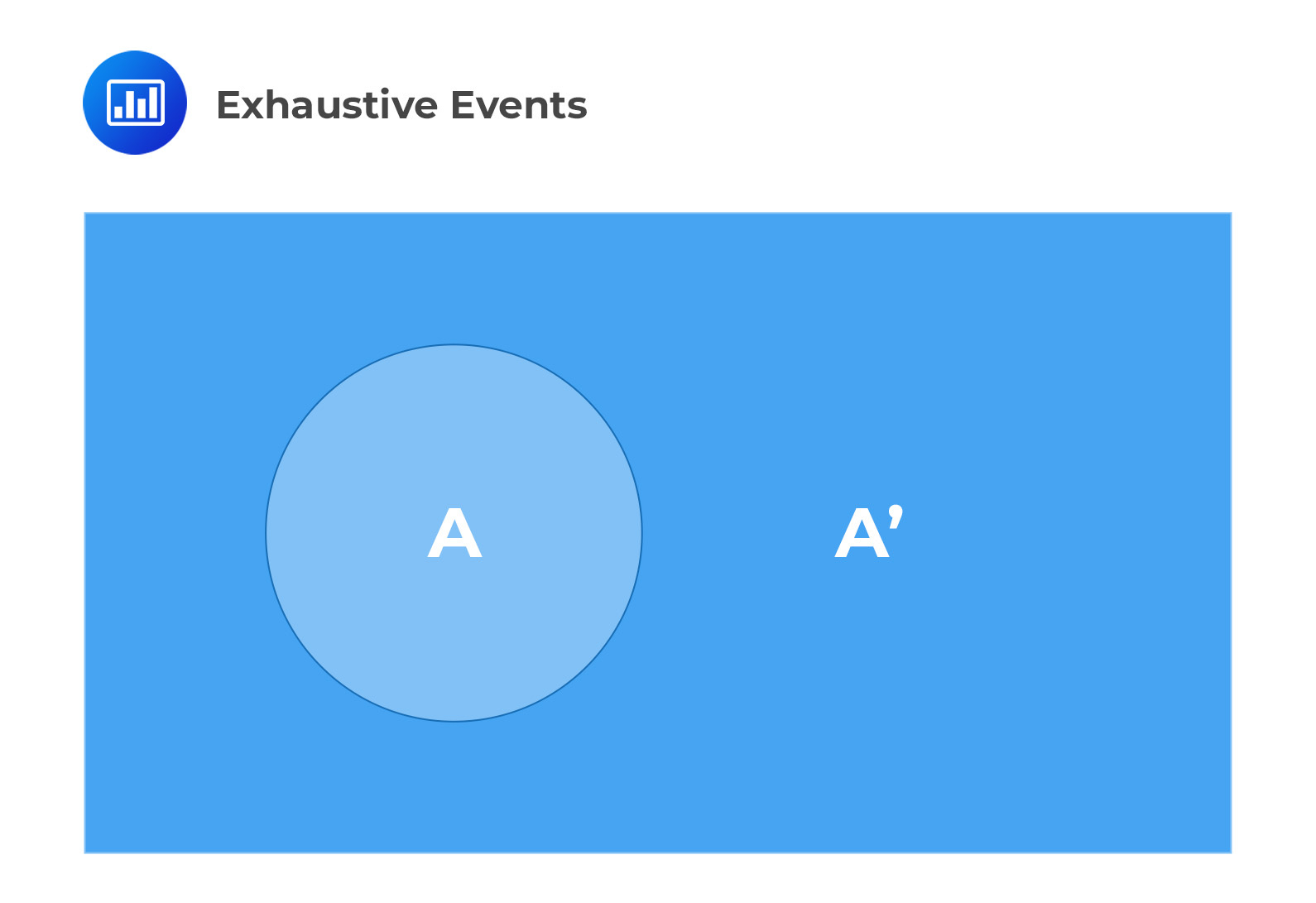Define set functions, Venn diagrams, s ...
What Is Probability? In mathematics, probability is the branch that deals with numerical... Read More
\(A\) and \(B\) are mutually exclusive events if \(A\) and \(B\) cannot both occur at the same time. For example, when a coin is flipped, it cannot land on both the head and tail simultaneously. Therefore, we consider the events “landing heads” and “landing tails” as mutually exclusive events.
If events are mutually exclusive, then their intersection \(\left( A\cap B \right) \) is equal to \(\emptyset\) (null set).
In the diagram below, \(A\) and \(B\) are mutually exclusive events.
 If \(A\) and \(B\) are mutually exclusive, then the probability of \(A\) or \(B\) occurring is the sum of the probability of event \(A\) occurring and the probability of event \(B\) occurring, as shown in the formula below:
If \(A\) and \(B\) are mutually exclusive, then the probability of \(A\) or \(B\) occurring is the sum of the probability of event \(A\) occurring and the probability of event \(B\) occurring, as shown in the formula below:
$$ P(A \cup B) = P(A) + P(B) $$
Consider drawing 2 cards from a standard deck. Let event \(A\) be drawing a Jack and event \(B\) be drawing a Queen. The probability of event \(A\) occurring is \({4}/{52}\) or \({1}/{13}\) and the probability of event \(B\) is also \({4}/{52}\) or \({1}/{13}\). Therefore, we can calculate:
$$ P(A\cup B)=P(A)+P(B)={ 1 }/{ 13 }+{ 1 }/{ 13 }=2/{ 13 } $$
Events \(A\) and \(B\) are exhaustive events if \(A\cup B\) is equal to the entire sample space, \(S\). It follows then that if \(A\) and \(B\) are mutually exclusive and exhaustive events then \(A\cap B=\emptyset \) and \(A\cup B=S\).
 Consider event \(A\) and its complement \(A^{c}\) (or \(A^{\prime}\)). These events are mutually exclusive and because they make up the entire sample space, \(S\), they are also exhaustive. Therefore,
Consider event \(A\) and its complement \(A^{c}\) (or \(A^{\prime}\)). These events are mutually exclusive and because they make up the entire sample space, \(S\), they are also exhaustive. Therefore,
$$ \begin{align*} & P\left( A \right) +P\left( { A }^{ ’ } \right) =1,\quad \text{and} \\ & P\left( A \right) =1-P\left( { A }^{ ’ } \right) \\ \end{align*} $$
Consider the experiment rolling a 6-sided die until a 1 is rolled. If we define event \(A\) as “NOT rolling a 1 before the 3rd roll,” then we can define event A’ as “rolling a 1 before the 3rd roll” which is the same as rolling a 1 on either the 1st or 2nd roll.
The probability of rolling a 1 on the 1st roll is \({1}/{6}\).
The probability of rolling a 1 on the 2nd roll is \({5}/{6}\) (because if we rolled a 1 on the 1st roll we would have stopped) * \({1}/{6}\) = \({5}/{36}\)
$$ \begin{align*} & P\left( { A }^{ ’ } \right) ={ 1 }/{ 6 }+{ 5 }/{ 36 }={ 11 }/{ 36 } \\ & P\left( A \right) =1-P\left( { A }^{ ’ } \right) =1-{ 11 }/{ 36 }={ 25 }/{ 36 } \\ \end{align*} $$
Learning Outcome
1.d Topic: General Probability – Calculate probabilities of mutually exclusive events.
Get Ahead on Your Study Prep This Cyber Monday! Save 35% on all CFA® and FRM® Unlimited Packages. Use code CYBERMONDAY at checkout. Offer ends Dec 1st.